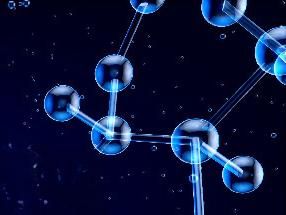Molecular phenomenon discovered by advanced NMR facility
Cutting edge technology has shown a molecule self-assembling into different forms when passing between solution state to solid state, and back again - a curious phenomenon in science - says research by the University of Warwick.
Professor Steven P. Brown from the Department of Physics, with colleagues in the Department of Chemistry, have identified that the supramolecular structure of a guanosine derivative can be different upon passing from the solid state into the solution state and vice versa.
This defies chemical precedent, as self-assembled structures driven by the formation of specific intermolecular hydrogen bonds in solution would be expected to remain the same in the solid state.
The phenomenon was revealed by the state-of-the-art nuclear magnetic resonance (NMR) facility at Warwick.
In solution state, the guanosine derivative analysed by the researchers is constituted by quartet-like molecular structure - and scientific intuition would suggests that this should remain like this in the solid state.
However, upon changing into the solid state, the supramolecular assembly surprisingly contains both quartet and ribbon structures.
Professor Brown and his colleagues made this discovery using advanced NMR spectroscopy technology, which measures the magnetic response of nuclei at the centre of atoms.
The researchers identified the distinct supramolecular states by spotting varying peaks in spectra that identify close approach of these magnetic nuclei in atoms.
Professor Brown comments:
"Access to state-of-the-art NMR infrastructure has enabled us to see with chemical precision how the guanosine-based molecules self-assemble, thus revealing the surprising phenomenon of a change in self-assembly upon going changing from solution to solid and from solid to solution."
Original publication
Most read news
Original publication
G. N. Manjunatha Reddy , Aida Huqi , Dinu Iuga , Satoshi Sakurai , Andrew Marsh , Jeffery T. Davis , Stefano Masiero , Steven P. Brown; "Co‐existence of Distinct Supramolecular Assemblies in Solution and in the Solid State"; Chem. Eur. J; 2017
Topics
Organizations
Other news from the department science

Get the analytics and lab tech industry in your inbox
By submitting this form you agree that LUMITOS AG will send you the newsletter(s) selected above by email. Your data will not be passed on to third parties. Your data will be stored and processed in accordance with our data protection regulations. LUMITOS may contact you by email for the purpose of advertising or market and opinion surveys. You can revoke your consent at any time without giving reasons to LUMITOS AG, Ernst-Augustin-Str. 2, 12489 Berlin, Germany or by e-mail at revoke@lumitos.com with effect for the future. In addition, each email contains a link to unsubscribe from the corresponding newsletter.





















































